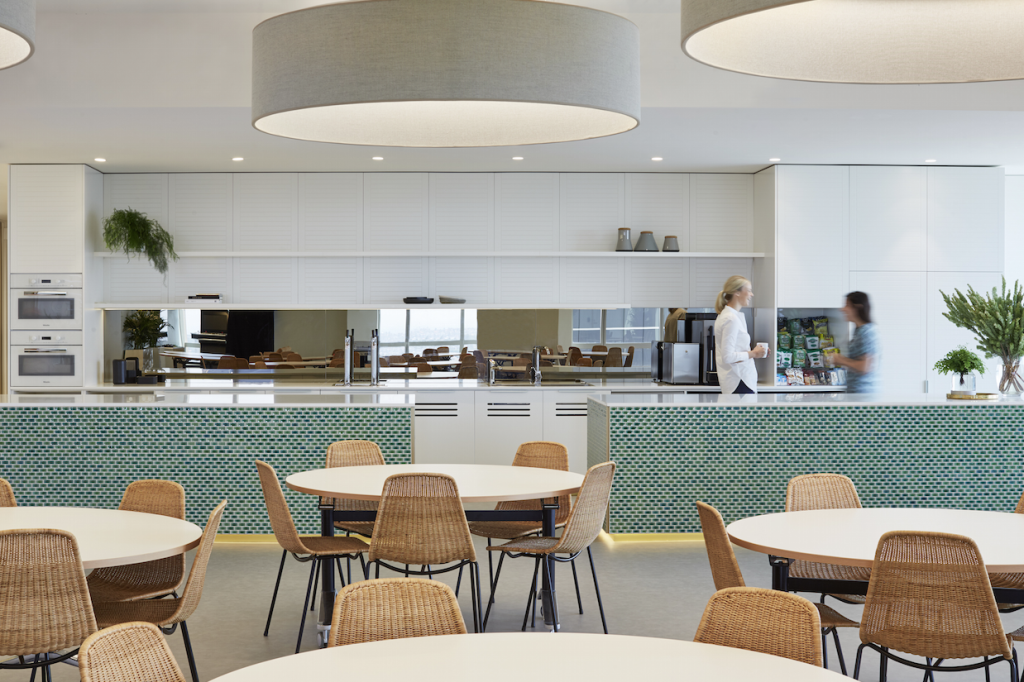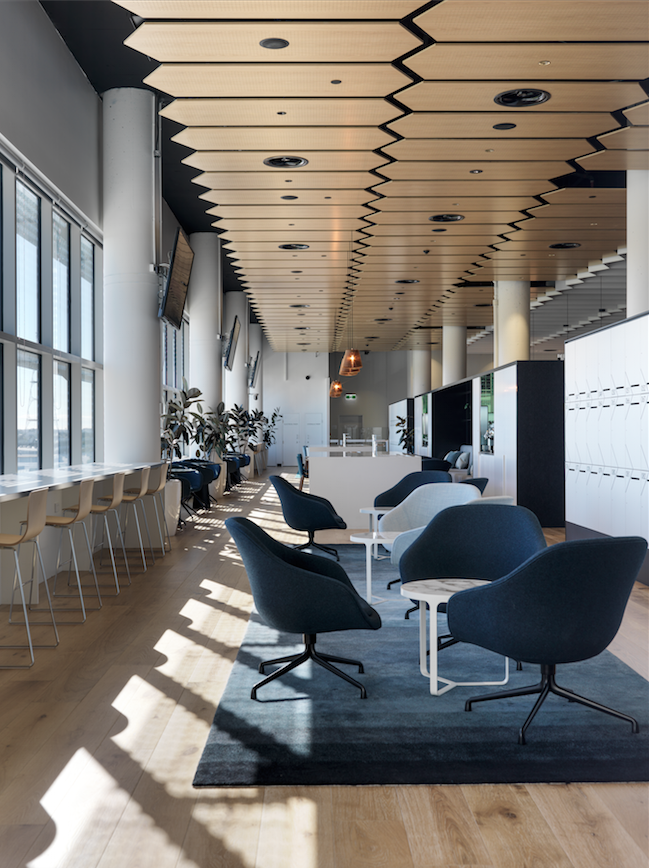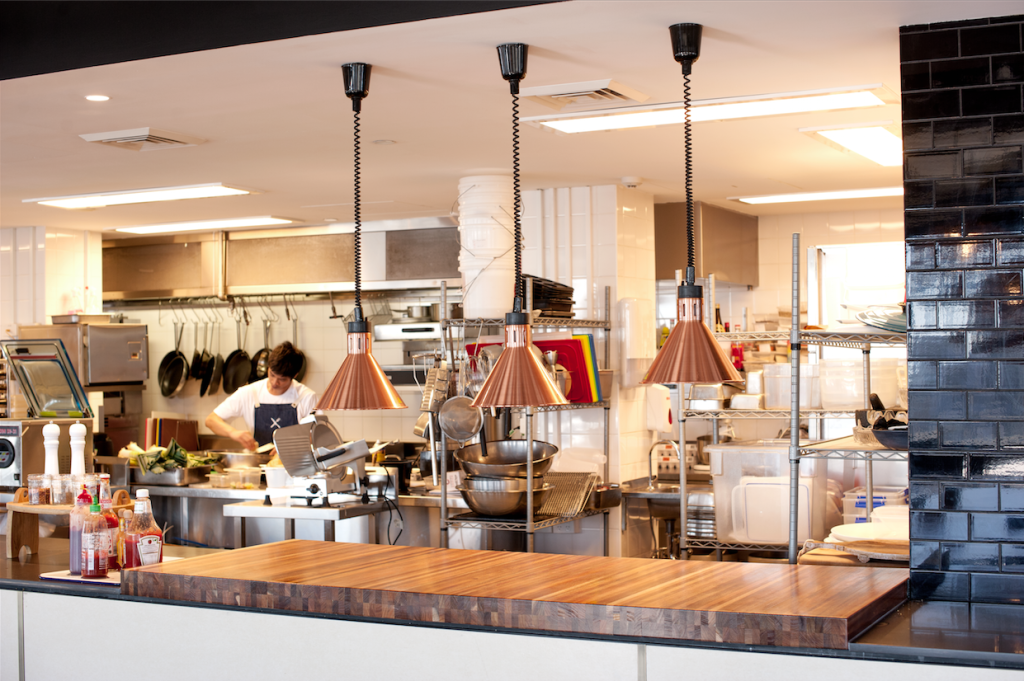
The technology workplace
The technology workplace
Share
Above: Twitter Headquarters, Australia, by Bates Smart. Photo by Sean Fennessy. Written by Gillian Serisier.
This article originally appeared in inside 91 – available now on newsstands, or digitally through Zinio.
Over the past seven years, a research project by leading Australian architectural practice Bates Smart has examined the tech industry, which culminated in a white paper: ‘The Technology Workplace’. The paper shows how tech companies are flipping the traditional office model due to their unique way of working. Interestingly, it finds tech workers spend more time chained to their desk than workers in any other industry! They also value completely different things than most workers, such as lifestyle perks. Bates Smart associate director Kellie Payne has led the transformation of tech offices, most recently the ASX Australian Liquidity Centre.
What did the paper set out to find?
How tech industries work differently… Our technology business clients were demanding a very different workspace solution from our more traditional professional services clients. As an evidence-based design practice, we were curious to understand the influences and business pressures driving those results.
When we analysed all the data collected over the past seven years it was abundantly clear that the technology sector works differently and, when you think about it, that makes sense. The technology industry is disruptive by its very nature, making the impossible possible, so there must be something different in the way they are working.
Who is going to use the results?
We have distilled our data to five key learnings that we believe are useful to building owners and developers, tenants and their representatives, large financial companies, new start-ups and those that are now ‘grown-up’, other businesses that are looking to grow and relocate.
At the same time we provide insight into how these businesses enable collaboration, how they empower their people to think and how they create that great sense of community – all great concepts that most CEOs today are grappling with.
Explain the Allen curve and why the findings differed to expectations?
The Allen curve was established by MIT’s (Massachusetts Institute of Technology’s) Professor [Thomas J] Allen in the late 1970s. His study demonstrated that the further away from someone you were, the less you communicated with them.
This research has been retested by another research team in 2014, analysing email and phone communication as well. In one experiment, engineers who shared workspace were 20 percent more likely to communicate digitally and emailed four times more frequently when collaborating on a project, as opposed to a remote team. Most importantly, these teams had 32 percent faster project completion times. This evidence shows us that we need to be vigilant when establishing remotely located teams.
Why is a technology environment so different to any other – agile, for example, is used differently in tech departments?
Tech teams collaborate. They work to a very short cycle, and the day is made up of multiple quiet focused individual tasks interspersed with team reviews and adjustments. To make this happen they need to sit closely together and hear what each other is doing. They need to jump into creative or collaborative mode to share and display their ideas. Their spaces tend to be ‘hackable’ – allowing the tech worker to reconfigure the space to suit their immediate needs.
This need to work closely drives the tech staff to be in the office at their desk near their team. In fact, they are in the workplace 12 percent more often and at their desks 14 percent more often than teams in other industries.
What do tech departments want?
They want to be able to think. They want to display their thinking and showcase their ideas in their workspace and they want feedback. They want to be able to collaborate and work with their team and to do meaningful work and have the opportu- nity to make a difference. They want access to their boss and the business leaders – easy access to share skills, knowledge and ideas.
And they want all the perks. At Campaign Monitor they have an amazing chef who puts on a cooked breakfast and lunch for their whole team every day. Not to mention the fantastic coffee and homemade treats.
Your research spans start-up, established and FinTech; for example, the Stock Exchange. What is the primary shift in priorities for staff as tech companies develop?
This was a really interesting piece of data – the priorities for staff shift from lifestyle perks as a young start-up to the ability to make an impact as the company develops.
If you think about this, as the company grows and develops, it would be easy for staff to be lost in the crowd, with a sense that they no longer have the influence they did as a person in a small developing start-up. Maintaining the ability to access mentors and share ideas as the company grows, allowing people to make an impact is critical to the long-term success of the business.
For the ASX [Australian Securities Exchange] teams, maintaining their tightknit group (TKG) was the most important issue for their staff. Their teams are very performance focused and being able to establish strong and effective collaborative teams was paramount to them. These talented teams are at a premium, and we spend a lot of time and effort to understand which priorities appeal.
What are the key growth strategies for tech companies?
Faster to market with the new best thing. Without the advantage of an accurate crystal ball to predict the future, tech companies rely on a culture of ideas and innovation. You just never know when or where the ‘next best thing’ will come from.
This gives rise to a particular workplace challenge, in that growth can be unpredictable and exponential. Their need for space can expand 30 to 50 percent over the course of a 10-year lease. The key challenge is how to accommodate that growth within the existing structure of the property industry.
Lease flexibility is crucial for both expansion and contraction. Co-working hubs and incubators offer a social network and business development opportunities along with month-to-month leases for smaller businesses. For those businesses that are more established, there are sublease options to expand into additional floors or across multiple buildings.
The next challenge for tech business becomes maintaining that connected and activated community vibe across multiple sites.
Subscribe to inside magazine today – available now on newsstands, or digitally through Zinio.



















